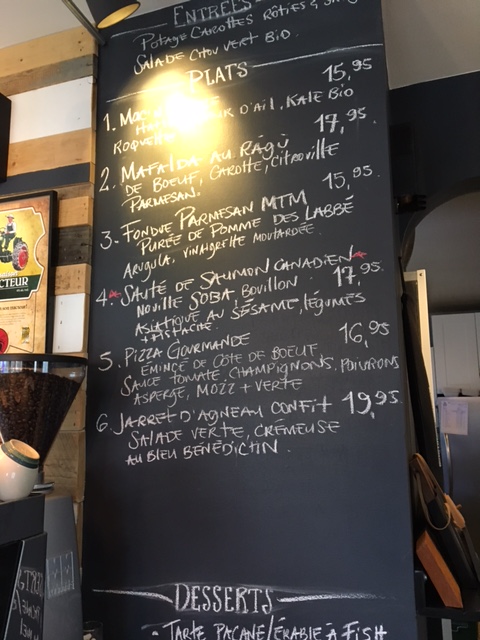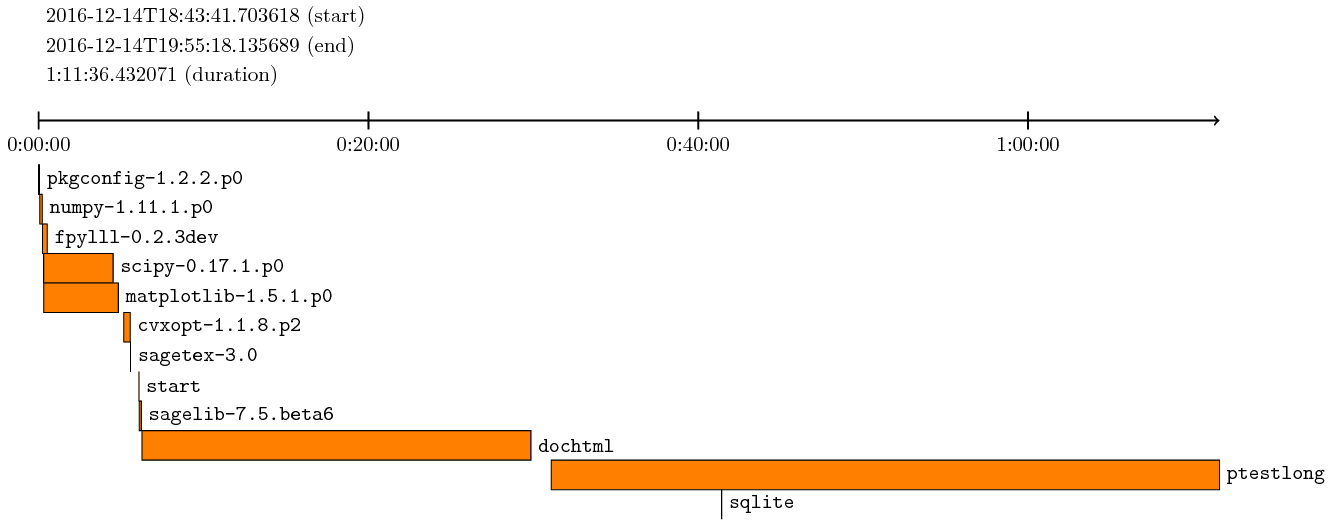Installing Ubuntu 18.04 on Aspire ES 11 ES1-132-C6LG
20 mai 2018 | Catégories: ubuntu | View CommentsI tried to install Ubuntu 18.04 on a Aspire ES 11 ES1-132-C6LG and got troubles because I get the screen "No Bootable Device found" after installation. The first help I found on Google is this posts on itsfoss.com but at step 3, the option "Select an UEFI file as trusted for executing" is unavailable so the proposed solution does not work for me.
Some comments on the same post shows that I am not alone with this problem:
Alex 2 months ago I cannot “Select an UEFI file”… Maybe Windows 10 configured my BIOS to reject any other drive (SSD) that has not Windows on it? Tom 1 month ago No, you need to install ubuntu without bootloader, mount the partitions after the installation, modprobe efivars and then install grub-efi
After looking at what grub-uefi and modprobe mean, I found this discussion (April 2017, Ubuntu 17.04) and this discussion (Dec. 2016) on askubuntu and this discussion (Dec 2016) on community acer very close to my problem. In the end, the most simple (no need to modprobe anything or install grub-efi) and usefull one (it worked) was this discussion (Jan 2017) on community acer especially the two posts by Spektro37 (on page 1, the second on page 2) that I recopy and adapt a little bit below.
Install Ubuntu;
Boot using Ubuntu USB and select "Try without installing";
Launch Gparted to get the EFI partition address. In my case it's /dev/mmcblk0p1;
Open the Terminal (ctrl + alt + T);
In the Terminal execute the following to create a directory in the media folder and to mount the EFI partition to that folder:
sudo mkdir /media/EFI sudo mount {replace_this_with_the_address_from_step_3} /media/EFI
In my case it would look like:
sudo mkdir /media/EFI sudo mount /dev/mmcblk0p1 /media/EFI
Create the /EFI/Linux/ folder:
sudo mkdir /media/EFI/EFI/Linux
Copy all the existing files from the folder that was created during Ubuntu instalation. In my case, the default folder was /EFI/ubuntu/:
sudo ls /media/EFI/EFI/ubuntu BOOTX64.CSV fw fwupx64.efi grub.cfg grubx64.efi mmx64.efi shimx64.efi
To do so, you can use the following command:
sudo cp -R /media/EFI/EFI/ubuntu/* /media/EFI/EFI/Linux/
Copy the BOOTX64.EFI from the BOOT directory to the Linux folder (without it, I confirm it didn't work):
sudo cp /media/EFI/EFI/BOOT/BOOTX64.EFI /media/EFI/EFI/Linux
According to Spectro37, /EFI/Linux/BOOTX64.efi is an hardcoded path for Linux.
Plus de 3000 questions maintenant disponibles en français dans l'interface WebWork
24 mars 2018 | Catégories: webwork | View CommentsSix ans après avoir utilisé et entamé la traduction de WebWork en français dans un cours que j'avais donné à l'Université du Québec à Montréal, je viens de voir sur internet que WebWork est maintenant utilisé à grande échelle en français au Québec.
Le projet Développement de WeBWorK pour le réseau des cégeps francophones a porté ses fruits. Un serveur du Centre collégial de développement de matériel didactique (CCDMD), donne facilement accès à un compte sur la plateforme WeBWorK. Selon le site, plus de 3000 questions sont maintenant traduites en français dans la Banque de problèmes libres (BPL) en français dans un répertoire sur github. De plus, des ressources en ligne sont disponibles notamment sur ce sujet sur le site de MathemaTIC.
Félicitations à toutes celles et ceux qui ont été impliqués dans la poursuite du projet dans les 6 dernières années.
De la purée de pomme des Labbé chez Mange ta main
14 novembre 2017 | Catégories: Uncategorized | View CommentsSi vous passez par Lac-Mégantic cette semaine, il faut faire un arrêt chez Mange ta main: ils servent de la purée de pomme des Labbé:)

What makes Montréal, Québec and Canada exceptional in terms of ultimate frisbee
26 août 2017 | Mise à jour: 10 septembre 2017 | Catégories: ultimate | View CommentsAs the 2017 American Ultimate Disc League (AUDL) Championship starts in Montreal today, I thought it would be a nice timing to show an aspect that makes Montreal (and more generally Quebec and Canada) so exceptional concerning Ultimate Frisbee.
Remark: all of the data and computations made for this post are available as a Jupyter Notebook in a github repository.
1. The density of population playing ultimate in the Country
The World Health Organization website has a lot of data on the density of physicians (counted as total number per 1000 population). Some coutry have a lot of physicians: as of today, Cuba has 7.519 physicians for each 1000 population while Canada has 2.477, USA has 2.554 and France has 3.227 physicians for each 1000 population. Some other country have a few like Mali that I visited in 2006 which has only 0.085 physicias per 1000 population.
I propose now to do the same for Ultimate Frisbee players as WHO does for physicians. For this we may use the data that was made public by the WFDF in 2014 before deciding how many bids where given to each country to compete in the World Club Ultimate Championships that took place in 2014 in Lecco. And we may get the population by country in 2014 from the World Bank website.
Lot of countries have very few ultimate players. For example, there are only 13 countries having at least 1000 players: United States, Canada, Australia, Germany, Japan, United Kingdom, France, Austria, Colombia, Norway, Netherlands, Philippines, Belgium. And only 22 countries having at least 500 players.
Above all, it is the density of people playing ultimate that makes Canada so exceptional. The next graphics including countries with at least 500 players declared to WFDF in 2014 says it all:
For every 1000 population, there is a ultimate player. Since everybody knows something like 1000 people. This means that in Canada everybody knows someone which plays ultimate. This makes a big difference in the country in terms of recognition. People do not ask if you play with a dog on the beach anymore in Canada when you say you play ultimate. They know this sport! In comparison, in France there is 1 ultimate player for each 24664 population. You got to be lucky to know one.
So many people play ultimate in Canada that there are almost as many players as in the United States:
The above graphics explains something more: it is much much more difficult to represent your country at WFDF competitions when you come from USA or Canada.
Note that these computations were done based on the number of active ultimate frisbee players declared to WFDF. It is possible that some countries do not declare all of them for some reasons. For example, USA Ultimate declares to WFDF only its own members which are in general people taking part in USA Ultimate competitions.
2. Women play ultimate in Canada
Canada is among the most egalitarian countries in terms of women playing ultimate. For each 7 ultimate players on the line in Canada, 2.800 are female. Among countries with at least 500 declared active players in 2014, only Philippines (2.996) and New Zealand (2.827) are more egalitarian.
In other countries, like France where only 1.771 female play ultimate for each 7 players, it is just impossible to get your club to play in the mixed division. This is also why we find much more women playing in the open division in Europe than in America up to a certain level of play.
The density of women playing ultimate in Canada is just exceptional:
In absolute value, this makes Canada the second country with the most female active players in 2014, just behind USA, with a lot of advance over the next countries:
3. The density of population playing ultimate in Quebec regions
In 2017, according to this page of the Quebec Ultimate Federation there are 6908 registered ultimate player in Quebec province of Canada. With 8.18 millions of population, this makes a density of 0.844 ultimate player in Quebec province for every 1000 of population.
Most of the people playing ultimate are in the big cities (Montréal and Québec city). There are 3454 active ultimate frisbee players in Montreal. If Montreal was a country, it would be ranked 7th for the total number of active player in the 2014 list of WFDF just behind Germany (3632), Japan (3621) and United Kingdom (3621).
Note that in the above graphic, Capitale-Nationale is the name of the region of Quebec city and Estrie is the name of the region of Sherbrooke city. Should I recall that Quebec city is hosting every year the Mars Attaque tournament which is without doubt the largest indoor ultimate tournament in the world with 120 teams gathering more than 1000 players (see this video of the most recent edition). Also team ONYX which finished 2nd in the mixed division during the Prague 2010 World Club Ultimate Championships was from Quebec city.
This gives even bigger densities if we look at densities per region. In the Montreal administrative region, there are 1.727 ultimate frisbee players for each 1000 population. Two other regions are above 2.000 including the region of Quebec city.
The data for the population in each Quebec region was taken from the associated wikipedia page about Quebec administrative regions.
Note that there is a difficulty in counting the density for regions that are near a big city (Longueil and Laval are near of Montreal, Chaudière-Appalaches is a region south of Quebec city, and Outaouais is the Quebec region that is near to Ottawa). The low density in these regions might be explained by the fact that people drive to the big city to play ultimate.
4. The density of population playing ultimate in Canada provinces
There are a lot of ultimate frisbee players in Ontario (including Ottawa and Toronto cities) and in British Columbia. Here is the number of ultimate frisbee players per provinces in each of the years 2014, 2015 and 2016 according to the 2016 Ultimate Canada Annual Report that was given to me by Danny Saunders (executive director of Ultimate Canada). I do not know if this annual report can be found online.
Using data on the population by Canada provinces and territories found on this wikipedia page, we can compute the density of ultimate frisbee players in each province. We discover that, if there is a high density of ultimate frisbee players in Quebec, it is even higher in the other provinces.
The province of Manitoba is the province with the highest rate with more than 3.5 players per 1000 population.
The density of population playing ultimate in some other cities
Below I am adding a graphic on the density of people playing ultimate in some cities I know. Cities in Quebec are much more dense in ultimate frisbee players than cities in Europe amongst this short list.
More to do
I am missing data to do more of those graphics. How many frisbee players are there in every states of the USA? in every province of Canada? in every city of the world? how many female? If you can help me gather this data, do not hesitate to contact me or add a comment below.
A time evolution picture of packages built in parallel by Sage
16 décembre 2016 | Catégories: sage | View CommentsCompiling sage takes a while and does a lot of stuff. Each time I am wondering which components takes so much time and which are fast. I wrote a module in my slabbe version 0.3b2 package available on PyPI to figure this out.
This is after compiling 7.5.beta6 after an upgrade from 7.5.beta4:
sage: from slabbe.analyze_sage_build import draw_sage_build sage: draw_sage_build().pdf()

From scratch from a fresh git clone of 7.5.beta6, after running MAKE='make -j4' make ptestlong, I get:
sage: from slabbe.analyze_sage_build import draw_sage_build sage: draw_sage_build().pdf()

The picture does not include the start and ptestlong because there was an error compiling the documentation.
By default, draw_sage_build considers all of the logs files in logs/pkgs but options are available to consider only log files created in a given interval of time. See draw_sage_build? for more info.
« Previous Page -- Next Page »
